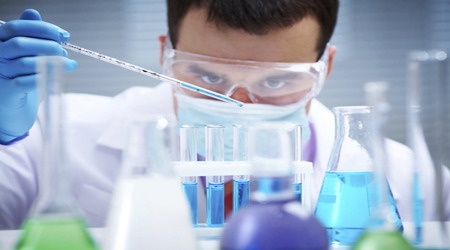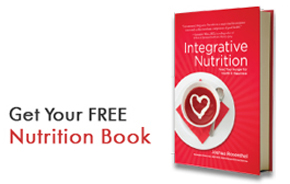Quick and portable foods are now the norm in modern society. Whether it’s a toaster pastry, a tube of yogurt, a can of cola, or an individually-wrapped slice of cheese – chances are that the product is heavily processed and contains various additives and chemicals to preserve its shelf life.
Did you know that these convenient foods – which commonly come with unpronounceable ingredients – may come at a dangerous price? Various food additives and chemicals have shown side effects which range from nausea and headaches to more serious conditions such as cancer, Alzheimer’s and multiple sclerosis[1]. Be sure to read ingredient labels carefully, and consume more whole foods!
Below is a list of the 12 most pervasive and detrimental additives and substances commonly found in processed foods.
Artificial Sweeteners:
Artificial sweeteners are a combination of chemicals that exist to make our foods sweeter without the calories of sugar. Artificial sweeteners have been exposed in the media for a long list of related side effects, such as headaches, nausea, anxiety, depression, dementia, skin rashes and more.[2]
Refined Sugar:
People in the US consume 130 to 160 pounds of sugar per year.[3] In other words, we are consuming half a cup of sugar a day and most of us aren’t even aware of it. High consumption of sugar and the corresponding elevated insulin levels can cause weight gain, bloating, fatigue, arthritis, migraines, lowered immune function, obesity, cavities and cardiovascular disease. It can also disrupt absorption of nutrients, possibly leading to osteoporosis, depression, PMS symptoms and stress.[4]
Monosodium Glutamate (MSG):
MSG is a common food additive used to enhance flavor in a variety of foods. Canned vegetables, frozen entrées, fast foods and soups are just a few products that contain MSG. Many people have experienced a variety of side effects which range from headaches, itchy skin and dizziness – to respiratory, digestive, circulatory and coronary issues.[5]
Artificial Colors:
The blues, reds, yellows and greens you commonly see in yogurts, cereals and juices don’t normally come from natural sources. In fact, food coloring is usually a synthetic chemical produced by scientists to color foods and increase a product’s visual appeal. Many colorings are derived from coal tar and can contain up to 10 parts per million of lead and arsenic and still be generally recognized as safe by the FDA.[6] Artificial colors can cause allergic reactions and increase hyperactivity in children with ADD.[7]
Butylated Hydroxyanisole (BHA) and Butylated Hydroxytoluene (BHT):
BHA and BHT are two food additives commonly used in the food industry to prevent oils from going rancid. Studies have shown that BHA has caused stomach-focused carcinogens in trials involving mice, hamsters and rats. The US Department of Health and Human Services has deemed BHA “reasonably anticipated to be a human carcinogen.” BHT is slightly less harmful than BHA, but should still be replaced with safer alternatives.[8]
Sodium Nitrate and Nitrite:
Sodium nitrate and nitrite are preservatives that are added to processed meat products to enhance red color and flavor. These compounds transform into cancer-causing agents called nitrosamines in the stomach. Noticeable side effects include headaches, nausea, vomiting and dizziness.8
Caffeine:
Caffeine is an addictive stimulant found in soft drinks, gum, diet pills and pain relievers; it naturally occurs in coffee, cocoa and tea. Caffeine causes calcium to be excreted from the bones, which can lead to osteoporosis and increased infertility.[9]
Olestra (Olean):
Olestra is a synthetic fat created by Proctor & Gamble that does not get absorbed in the digestive tract. Side-effects commonly caused by olestra include diarrhea, abdominal cramps, bloating, nausea and vomiting. Olestra inhibits the absorption of some vitamins and minerals.8
Brominated Vegetable Oil (BVO):
Brominated vegetable oil is used to keep flavor oils in soft drinks in suspension. When consumed, it is stored in fat and over time can accumulate. This additive can lead to reproductive interference and birth defects. It has been banned in 100 countries. This additive is less used in modern food applications.8
Partially Hydrogenated Oils:
Partially hydrogenated oils are made by reacting different varieties of oil with hydrogen. When this occurs, the level of polyunsaturated oils (good fat) is reduced and trans-fats are created. These oils are added to products to enhance appearance and prevent spoiling. They are associated with heart disease, breast and colon cancer, atherosclerosis and elevated cholesterol.[10]
Pesticides:
Every year more than two billion pounds of pesticides are added to our food supply. That’s about 10 pounds per person per year. Many of the pesticides used throughout the world are carcinogenic. Pesticide consumption has been linked to birth defects, nerve damage, cancer, and other effects that might occur over a long period of time.[11]
Genetically Modified Organisms (GMOs):
GMOs are plants or animals that have had their DNA modified. In the US, the majority of the corn, soybean, cotton and canola crops are now genetically modified, and one or more of these can be found in nearly every processed food. GMOs have not been proven safe and some studies show GMO’s may decrease immunity to diseases in plants as well as humans. They may also cause resistance to antibiotics and could have a negative impact on genetic function. Plants that are genetically modified to be resistant to disease, pesticides, and insecticides could diminish the need to use these strong chemicals. Conversely, they may build up a resistance and therefore require even larger amounts of chemicals than before.[12]
[1] Kent, Linda. “Livestrong.” Food Additive Side Effects. N.p., 23 Mar 2010. Web. 15 Dec 2011.
[2] Brassard, Susan. “Side Effects of Artificial Sweeteners.” Livestrong.com. N.p., 29 Jul 2011. Web. 15 Dec 2011.
[3] “Cut back, way back, on sugar, says heart group.” MSNBC. N.p., 24 Aug 2009. Web. 22 Dec 2011.
[4] Kam, Katherine. “The Truth About Sugar.” WebMD. N.p., n.d. Web.
[5] Zeratsky, Katherine. “Monosodium Glutamate (MSG): Is it Harmful?.” WebMD. N.p., n.d. Web.
[6] Arnell, Neev. “The Dangers of Artificial Food Colors.” Natural News. N.p., 25 Mar 2011. Web. 6 Feb 2012.
[7] Franco, Virginia. “Effects of Artificial Colors in Children with ADD.” Livestrong. N.p., 25 Mar 2011. Web.
[8] “Food Additives.” Center for Science in the Public Interest. N.p., n.d. Web.
[9] Lingohr-Smith, Melissa. “The Effects of Caffeine on Osteoporosis.” Livestrong. N.p., 13 Dec 2010. Web.
[10] Bruen, Jude. “Partially Hydrogenated Oil vs. Hydrogenated Oil.” Livestrong. N.p., 29 Nov 2009. Web.
[11] Environmental Protection Agency. Health Problems Pesticides May Pose. 2011. Print.
[12] “GMO Facts.” The Non-GMO Project. N.p., n.d. Web.










Leave A Response